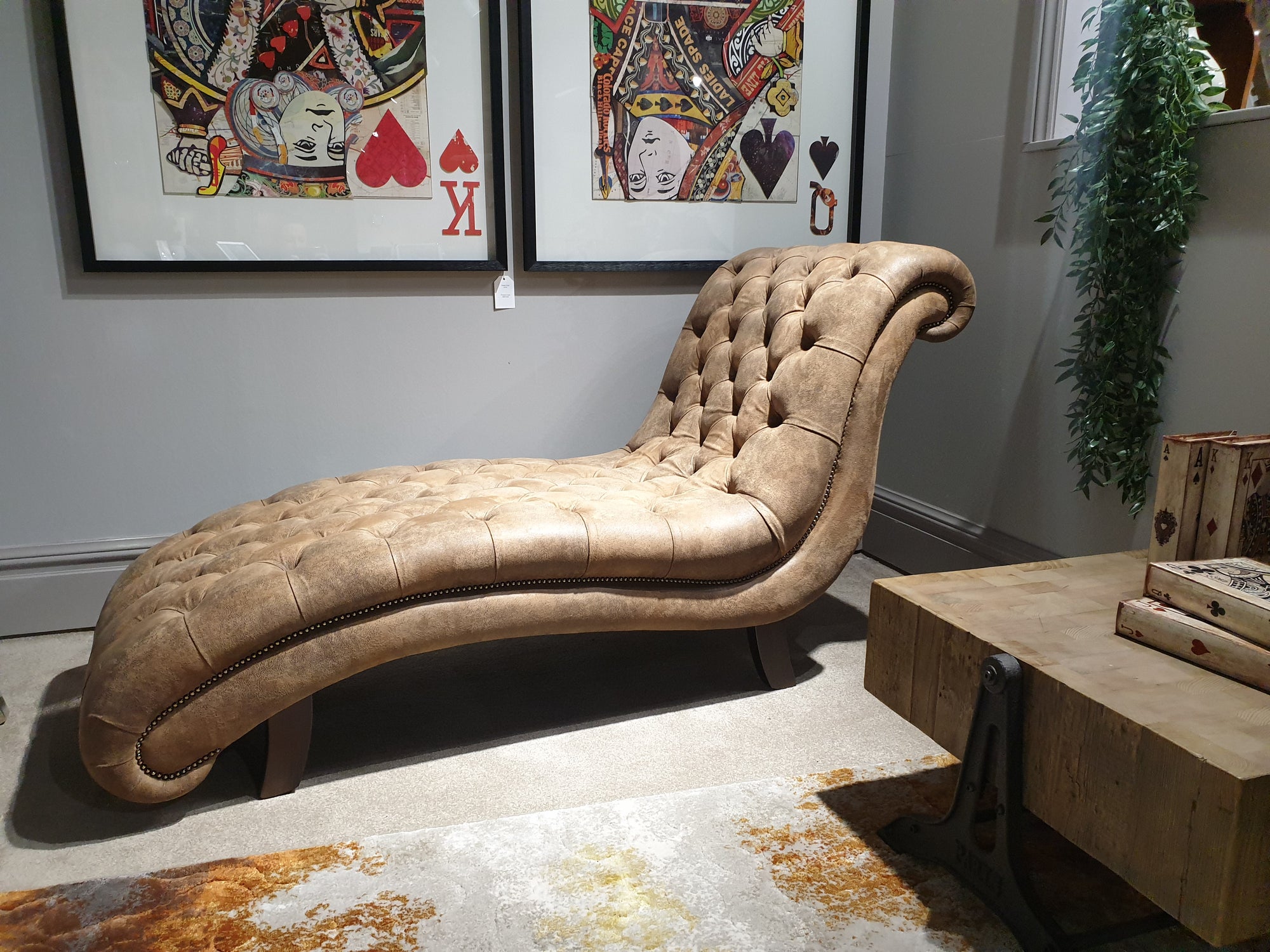A Guide To Faux And Vegan Leather
April 12 2023 – Glen Lim

Authentic leather has long been used to make the likes of shoes, gloves, and even sofas, because it’s hard-wearing and ages particularly well. But, whether it’s for environmental or ethical reasons, you might prefer to spend your money on faux and vegan leather alternatives. As a result, you might be wondering what these are made of and how they compare to their genuine leather counterparts.
Here, we’re going to explain exactly what faux leather is. Plus, we’ll offer you some helpful information for when it comes to cleaning and maintaining the material.
What is faux or vegan leather?
Faux leather is a synthetic material that’s made to look like the real deal. And, it can be referred to in a range of different ways — in fact, it’s known as everything from artificial, synthetic, and vegan leather, to pleather and leatherette. But, all of these terms simply refer to a material that’s been created to replicate the look and feel of genuine leather, just without the use of animal by-products.
Some faux leathers are of such a high quality that they’re indistinguishable from their genuine counterparts, but there will typically be some minor differences that allow you to tell one from the other. For example, as real leather is produced using an authentic animal hide, it will typically have an uneven grain and slight imperfections on its surface. Meanwhile, the grain of faux leather will be more consistent.
Faux and vegan leather is used to make a wide range of different items, from accessories like shoes, bags, and belts, to furniture like faux leather Chesterfield sofas, footstools, and armchairs. In fact, it can essentially be used to upholster anything you would typically cover with real leather.
What is faux or vegan leather made from?
Faux or vegan leather is made with a layer of synthetic plastic coating — this is why you might find the material referred to as ‘pleather’. The coating is layered over a fabric backing, before being treated in a way that gives it a leather-inspired texture.
There are a range of different chemical compounds that are traditionally used to create the all-important plastic coating, but the most common tend to be polyamide microfibre, polyvinyl chloride, which is commonly referred to as PVC, or polyurethane, which is sometimes called PU leather.
How is faux or vegan leather made?
While faux or vegan leather upholstery can be made using a range of different chemical compounds, the process of how it’s created tends to be the same, regardless. Here’s a step-by-step look at how it’s typically made:
- Step 1: A synthetic coating, which is most commonly made using polyamide microfibre, polyvinyl chloride, or polyurethane, is applied to a fabric backing. This will usually be made from polyester.
- Step 2: The desired colour is achieved using dye, which is applied to the synthetic coating.
- Step 3: Chemical treatments and embossing machines are used to give the material some texture. This should replicate the grain and pore markings of authentic leather, so it resembles the real deal. One reason why synthetic can be better than real leather is that this process can be controlled to ensure every piece of the vegan material is usable. It can then be cut into metre lengths. This isn’t always possible when you’re working with genuine animal hides, because only the highest quality pieces with the fewest imperfections can be used.
Is faux leather vegan?
Faux leather is made without the use of any animal by-products, which means it’s always vegan. In fact, the terms “vegan leather” and “faux leather” are often used interchangeably. So, if you’re thinking about opting for synthetic leather for ethical reasons, you can be confident that it will be vegan.
Pros and cons of faux leather
While, for the most part, faux leather is incredibly similar to its genuine counterpart, there are some key differences — some good, and some that might mean it isn’t the best material for you. So, here, we’ll outline the pros and cons of vegan leather, so you can make an informed decision about whether it’s going to be the best choice, or real leather will be more suitable for your needs.
Here’s why faux or vegan leather might be a great choice for you:
- It’s made without the use of animal by-products: If you live a vegan lifestyle, or don’t eat any animal products and are thinking about applying the same rules to your shopping habits, the fact that faux leather is made without the use of animal by-products is likely to be a huge plus for you.
- It’s becoming increasingly convincing: The process of creating synthetic leather has become incredibly advanced in recent years and, as a result, it’s often very difficult to tell faux leather from the real deal. So, you don’t have to worry about it looking fake.
- There’s a huge variety to choose from: Man-made leather tends to hold dye much better than real animal hides do, which means it’s typically available in more styles and colours. This can be very useful if you’re shopping for a leather sofa, jacket, or bag, and have a very clear idea of what you want.
- It’s very hardwearing: Faux or vegan leather doesn’t crack or fade easily, which is a problem that can often be seen in low-quality genuine leathers. I’s also particularly resistant to scratches, which is why synthetic leather makes great upholstery for pet owners.
- It doesn’t require much maintenance: As we explain in our guide to cleaning and maintaining leather sofas, keeping real leather items in tip-top shape requires specialist cleaning products. But, that isn’t the case when it comes to synthetic versions, which makes them particularly easy to care for.
And here’s why real leather — or a completely different option — might be more suitable than faux leather:
- It isn’t as breathable as real leather: As vegan leather is typically manufactured using a layer of plastic, it isn’t a very breathable material. So, if you buy a piece of faux leather clothing, you might find that it traps heat and moisture, making it uncomfortable to wear. Although, this isn’t necessarily something you need to think too much about if you’re shopping for a new sofa, chair, or footstool.
- It won’t age in the same way as real leather: While faux leather can be made to look very much like real leather, it typically won’t age in the same way. Leather made from authentic animal hide will oxidise and take on a soft sheen over time, which can give it a nice lived-in look. But, although vegan leather can be made in a way that makes it look like vintage or worn real leather, it won’t age in quite the same way. If cracks or tears start to appear in your faux leather pieces over time, they’ll need to be repaired or placed.
- It typically won’t last as long: As we’ve already mentioned, faux leather is very durable and, when properly cared for, it can last for years. However, real leather will typically still last much longer — typically 10–20 years, and possibly even longer if it’s well looked after. As a result, if you’re looking to buy an accessory or piece of furniture that’s guaranteed to last years — or maybe even decades — genuine leather can’t be beaten on longevity.
How to clean and care for faux or vegan leather
In order to keep your faux leather items in good shape and help them to last as long as possible, it’s important that you know how to properly clean and care for them. Fortunately, this is quite simple to do. If something is spilled on your faux leather, here’s a step-by-step guide of how to deal with it:
- Step 1: Start by blotting any fresh stains with a clean cloth or paper towel. This will help to remove any remaining liquid or loose dirt. Be careful not to scrub — instead, dab at the fabric to avoid damaging it.
-
Step 2: You’ll then want to clean the surface of the material using soapy water, which you can make by adding a squirt of washing up liquid to a bowl of hot water. Dampen a dish cloth with this mixture and then use gentle circular motions to wipe your faux leather clean.
A cloth is best for this, because a sponge or scourer can damage the surface of faux leather. Just remember to test out your soap mixture and technique on an inconspicuous area of your sofa before cleaning the entire thing to ensure there aren’t any problems. - Step 3: You’ll then want to dry off your leather furniture or accessory as quickly as possible. You can do this by buffing the area gently with a dry microfibre cloth. This will have the added benefit of giving your faux leather a nice sheen.
It’s important that you only ever clean your faux leather items when it’s absolutely necessary, as over-washing can weaken the fabric. You should also take care to dry them thoroughly afterwards.
We would also advise against using any harsh chemicals, such as alcohol, on faux leather, as this can cause it to dry out and peel or crack. Direct sunlight can also fade and dry out the material, so it’s best to place your furniture or accessories in a shaded spot within your home.
We hope we’ve been able to answer all of the questions you might have had about faux or vegan leather. And, if you’re still undecided about whether it’s the right material for you, our fabric and leather sofa buying guides should be able to give you any additional information you need to make the right decision.
Once you’ve picked out the perfect material, you can go on to design your perfect piece of furniture using our bespoke Chesterfield service. Or, we can make most of our classic styles with whichever covering you choose, so be sure to browse our extensive selections of Chesterfield sofas, chairs, corner sofas, sofa beds, and footstools for all of the inspiration you’ll need.

